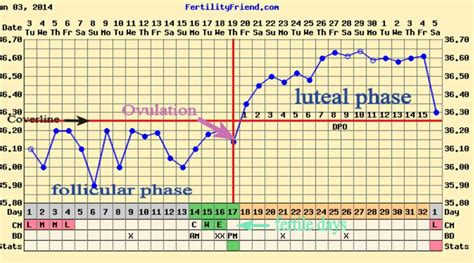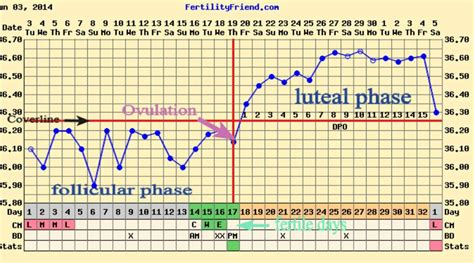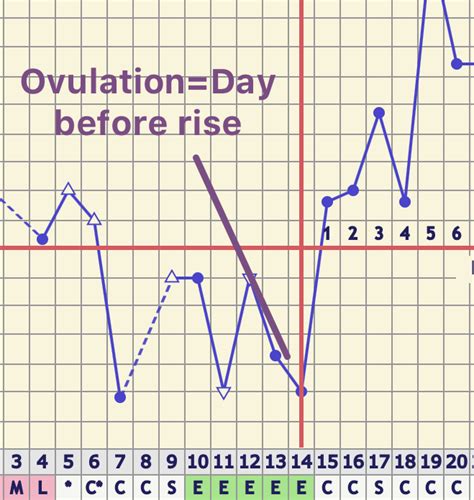Intro
Discover how Basal Body Temperature (BBT) tracking helps monitor ovulation, fertility, and menstrual cycles, using BBT charts and thermometers to identify ovulation symptoms and patterns for natural family planning and conception.
Basal body temperature (BBT) tracking has been a widely used method for monitoring ovulation and fertility for many years. By taking daily temperature readings, women can identify subtle changes in their body temperature that occur during their menstrual cycle. These changes can indicate when ovulation is likely to happen, helping women who are trying to conceive or avoid pregnancy. In this article, we will explore the ways BBT tracks ovulation and provide insights into how this method works.
BBT tracking is based on the idea that a woman's body temperature increases slightly after ovulation, due to the release of the hormone progesterone. This increase in temperature is usually very small, around 0.4-1.0 degrees Fahrenheit, but it can be detected by taking daily temperature readings. By tracking these temperature changes, women can identify when ovulation is likely to have occurred and plan accordingly. Whether you're trying to get pregnant or simply want to better understand your body, BBT tracking can be a useful tool.
For those new to BBT tracking, it's essential to understand the basics of how it works. BBT tracking involves taking your temperature every morning, at the same time, using a basal body thermometer. This thermometer is specifically designed to detect tiny changes in temperature, providing accurate readings. The temperature readings are then recorded on a chart or graph, allowing you to visualize the changes in your body temperature over time. By analyzing these changes, you can identify patterns and trends that indicate when ovulation is likely to happen.
Understanding BBT Charts

Types of BBT Charts
There are several types of BBT charts available, including digital and paper-based charts. Digital charts can be accessed through mobile apps or online platforms, providing a convenient and easy-to-use way to track your temperature readings. Paper-based charts, on the other hand, require you to manually record your temperature readings each day. Both types of charts can be effective, but digital charts often provide more features and functionality, such as automated temperature tracking and fertility predictions.How BBT Tracks Ovulation

Benefits of BBT Tracking
BBT tracking offers several benefits for women who are trying to conceive or avoid pregnancy. Some of the benefits include: * **Increased fertility awareness**: BBT tracking helps women understand their menstrual cycle and identify when ovulation is likely to occur. * **Improved conception rates**: By identifying the fertility window, women can time intercourse to coincide with ovulation, increasing the chances of conception. * **Natural family planning**: BBT tracking can be used as a natural method of family planning, allowing women to avoid pregnancy without the use of hormones or other birth control methods. * **Hormonal balance**: BBT tracking can help women identify hormonal imbalances that may be affecting their fertility. * **Stress reduction**: By understanding their menstrual cycle and identifying patterns, women can reduce stress and anxiety related to fertility.Common BBT Tracking Mistakes

BBT Tracking Tips
To get the most out of BBT tracking, here are some tips to keep in mind: * **Take temperature readings at the same time each day**: Consistency is key when it comes to BBT tracking. * **Use a high-quality thermometer**: Invest in a basal body thermometer that is specifically designed for BBT tracking. * **Keep a BBT chart**: Recording temperature readings on a chart or graph can help identify patterns and trends. * **Account for external factors**: Keep track of external factors that may be affecting your body temperature, such as stress, sleep patterns, and travel. * **Seek medical advice**: If you're experiencing fertility issues or irregular menstrual cycles, seek medical advice before relying solely on BBT tracking.BBT Tracking and Fertility

BBT Tracking and Polycystic Ovary Syndrome (PCOS)
Women with PCOS may experience irregular menstrual cycles, making it difficult to track ovulation using BBT. However, BBT tracking can still be a useful tool for women with PCOS. By tracking temperature changes over several menstrual cycles, women with PCOS can identify patterns and trends that indicate when ovulation is likely to happen. Additionally, BBT tracking can help women with PCOS identify hormonal imbalances that may be affecting their fertility.Conclusion and Next Steps

We invite you to share your thoughts and experiences with BBT tracking in the comments below. Have you used BBT tracking to monitor ovulation or fertility? What were your results, and what tips would you share with others? By sharing your experiences and insights, we can create a community of women who are empowered to take control of their fertility and reproductive health.
What is BBT tracking, and how does it work?
+BBT tracking involves taking daily temperature readings to monitor the subtle changes in body temperature that occur during the menstrual cycle. These changes can indicate when ovulation is likely to happen, helping women who are trying to conceive or avoid pregnancy.
How accurate is BBT tracking, and what are the benefits?
+BBT tracking can be an accurate method for monitoring ovulation, but it's essential to use a high-quality thermometer and take consistent temperature readings. The benefits of BBT tracking include increased fertility awareness, improved conception rates, and natural family planning.
Can BBT tracking be used for women with irregular menstrual cycles or PCOS?
+Yes, BBT tracking can be used for women with irregular menstrual cycles or PCOS. However, it's essential to track temperature changes over several menstrual cycles to identify patterns and trends. Additionally, women with PCOS may need to use other methods, such as ovulation predictor kits, to monitor ovulation and fertility.
What are some common mistakes to avoid when using BBT tracking?
+Common mistakes to avoid when using BBT tracking include inconsistent temperature readings, poor thermometer quality, and failure to account for external factors. It's also essential to track temperature changes over several menstrual cycles and seek medical advice if experiencing fertility issues or irregular menstrual cycles.
How can I get started with BBT tracking, and what resources are available?
+To get started with BBT tracking, invest in a high-quality basal body thermometer and download a BBT tracking app or chart. There are many resources available online, including tutorials, videos, and support groups. Additionally, consult with a healthcare provider or fertility specialist for personalized advice and guidance.
